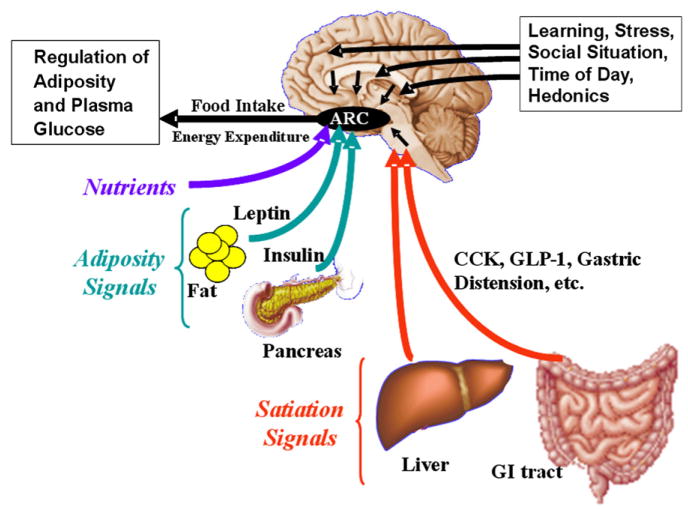Figure 1. Physiology of Satiation.
Several categories of signals converge on the brain to influence energy homeostasis. Satiation signals such as CCK and GLP-1 arise from the gastrointestinal tract and related organs during meals and are conveyed to the hindbrain. Adiposity signals are hormones whose secretion is proportional to body fat and that stimulate receptors in several areas of the brain, including the hypothalamic arcuate nucleus (ARC). Energy-rich nutrients also provide a direct signal to the ARC. These sensory inputs are integrated with circuits from other brain areas related to cognitive, social, and emotional activities, and the output alters food intake, energy expenditure, and ultimately body adiposity.

